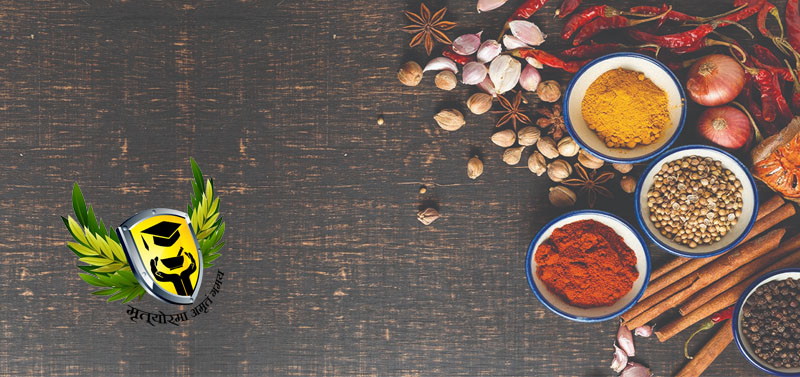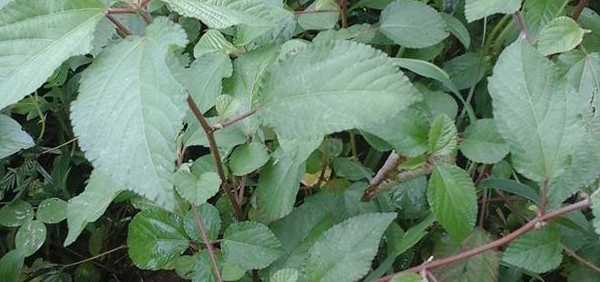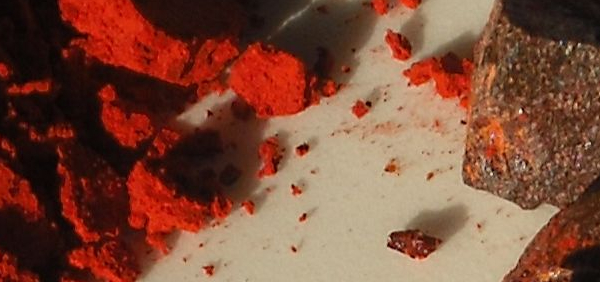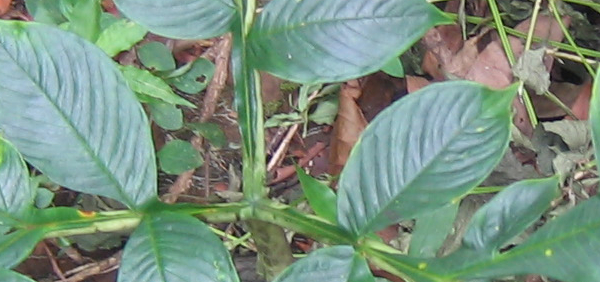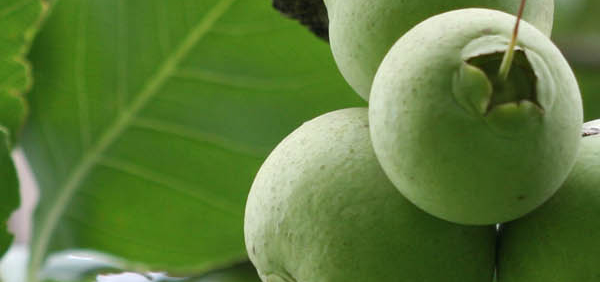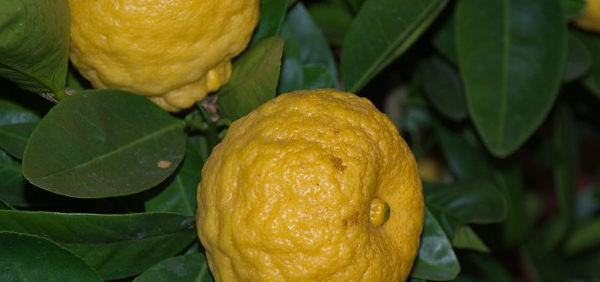jivant :
 Holostemma ada-kodien (Syn: Holostemma annulare) belongs to Asclepiadaceae family. It is also called as Jivanti, Arkapushpi, Kshira, Dodi, Suryavalli and widely distribute in tropical forest in India
Holostemma ada-kodien (Syn: Holostemma annulare) belongs to Asclepiadaceae family. It is also called as Jivanti, Arkapushpi, Kshira, Dodi, Suryavalli and widely distribute in tropical forest in India HISTORICAL AND MYTHOLOGICAL REVIEW:
The mention of Jivanti is even found in Atharva Veda. Charak and Bhavprakash, describe it as best among leafy vegetables. It is included in Jivaniya Gana, which is the group of herbs used for promoting vitality and life.Taxonomical Classification
Kingdom: Plantae - Plants
Subkingdom: Tracheobionta - Vascular plants
Superdivision: Spermatophyta - Seed plants
Division: Magnoliophyta - Flowering plants
Class: Magnoliopsida - Dicotyledons
Family: Asclepiadaceae
Genus: Holostemma
Species: Holostemma ada-kodien
Allied species:
VERNACULAR NAMES
Sanskrit: Jivanti, ArkapushpiEnglish: Ringcoronel, Swallowwort, Holostemma
Hindi: Chhirvel
Telugu: Palagurugu
Marathi: Dudruli, Shidodi
Konkani: करबफूल karabphul
Gujarathi: Kharner, Khiravel, Khordodi;
Tamil: Palay kirai
Malayalam: Ada kodien, Atakkoti, adapathiyan
Kannada: Jeeva haaleballi, Muraligana kasa
Assamese: Assamese: জীৱন্তী ফুল jivanti phula
Nepal: जिवन्ती jiwantee •
Tulu: ಅರಣೆ ಬೂರು arane booru
Varities:
Classical Categorisation- Charaka- jeevaneeya, mathura skanska, Vayasthapana
- Sushrutha - Kakolyadi gana
- Vagbhata - jeevaneeya
- Bhavaprakasha - Guduchyadi varga
- Dhanvantiri Nighantu- Guduchyadi varga
- Kaiyyadeva Nighantu - Oushadhi Varga
- Raja Nighantu - Guduchyadi Varga
Synonyms
Synonyms in Ayurveda: Jeevanti, arkapushpi, ksheerini, payasviniChakshushya - improved vision
Rasa: Madhura
Guna: Laghu Snigdha
Veerya: Sheetha
Vipaka: Maduram
Karma: Kaphahara Pittahara Vatahara
The plant is used as Hypoglycemic and Antidiabetic activity; Antipyretic Activity; Antibacterial; Anti-inflammatory Activity, Antioxidant activity, other uses includes rejuvenative, aphrodisiac, expectorant, galactogogue, stimulant, and in ophthalmic disorders . There is huge demand for this plant; more than 150 tones is required every year in south Indian pharmacies
Cultivation:
The plant prefers a tropical humid climate and partially sunny locations. Sandy-loam soil is best for its cultivation.Propogation:
Harvesting:
The root parts are used as drug and it takes one to two years for its good development. The crop yield is maximum (400–450 kg/hectare of fresh roots) after about one year of planting. However, the crop quality reaches the peak only after 18 months, although the yield of fresh roots may be reduced to about 250 kg/hectare. Thus, keeping in mind quality considerations, the crop should preferably be harvested when it attains 1.5–2 years of age. Harvesting is done by digging the soil to collect the roots. These roots are then cleaned well.Phytochemistry:
Tubers / roots, contains 4.07% protein, 24 % sugar and 35.4% starch. The roots also contain α – amyrin, lupeol, β – sitosterol and Six Amino Acids – alanine, aspartic acid, threonine, glycine, serine and valine.PHARMACOLOGY:
Important formulations- Jivanti taila
- Jivanti ghrta
- Jivantyadi taila
- Anu taila
- Sadbindu taila
- Manasamitravatakam,
- Balarishtam
Parts used for medicinal purpose
Flower, Leaves, Root, ,Dosage:
Root powder -4-6 gSubstitute:
Dregia volubilisAdultrants:
The dried samples are often adulterated due to scarcity. Besides the tuberous roots, the normal roots are also found admixtured in the samples collected from marketControversy:
Though it is an important herb but the botanical identity of this plant is highly disputed.Commercial value:
There is huge demand for this plant; more than 150 tones is required every year in south Indian pharmaciesMorphology:
Histology:
Geographical distribution:
Tropical Himalayan region, Dehradun, Western Ghats up to an altitude of 2000 m. Also found in Sri Lanka, Myanmar and Western China.ECOLOGICAL ASPECT:
Habitat: moist deciduous forests, scrub jungles and foot hills of the dry deciduous forestsPlant conservation:
Although widely distributed throughout Southern India, the population in wild is gradually reducing due to the destructive and ruthless collection of root tubers, as a raw material for the ayurvedic drug preparations, and fruit set is a major problem in multiplying the species in wild, and other anthropogenic reasons the species became vulnerable (Nair et al., 1992).General Use:
Therapeutic Uses:
Jivanti is considered a stimulant and tonic in Ayurvedic literatures. It is indicated in debility due to seminal discharge. It is described as an herb with sweet, cold, aphrodisiac, light to digest and rejuvenative properties. It enhances life, vigor and fertility. Jivanti is tridosh-har and balances Vata, Pitta, and KaphaSystemic Use:
Administration:
DecoctionPharmacological:
This is drug of choice for emaciation, weakness, fever, difficult breathing, burning sensation in the body, and fertility issues.Clinical trials:
1. Meena Thomas Irimpan, Jolly CI, Sheela D. A study of the phytochemical composition and antibacterial activity of Holostemma ada-kodien Schultes. International Journal of Pharm Tech Research 2011; 3:1208-1210.Research:
Toxicity studies:
The use of routine clinical doses shows no side effects.Use in other system of medicine:
In West Bengal, H. ada-kodien Schult. is used as a febrifuge (Dey & De 2012), the ethanolic extract of the roots of H. annulare, (Roxb.) K. Schum. commonly used in Ayurvedic medicine, showed antidiabetic activity in Wistar rats with diabetes mellitus (Shirwaikar et al. 2007).CONCLUSION:
Holostemma ada-kodien, is found in tropical Western Ghats. It is used in as a tonic that maintains youthful vigour. The tuberous roots of the plant are used to treat eye diseases, cough, fever, burning sensation and as a galactagogue.Photos of jivant -
Holostemma ada-kodien
- Courtesy: https://08511630493324166816.googlegroups.com/attach/d35855ba43c1e01/DSC06318.JPG?part=0.3&view=1&vt=ANaJVrHVZVckJOpP9LHJLr25MZxKUdrNg98ymzKwXLvacZbM6ngtpMCc3xbT2BWOOJk4ahB5irdq06SZP-MZH-dR6CWmDTD3TVqiamDCW14x1dkTWCEM_qg
- Courtesy: https://08511630493324166816.googlegroups.com/attach/858540490962de72/IMG_1514.JPG?part=0.1&view=1&vt=ANaJVrF_D5JtkjSH2jEMVs8dPZpJmqs7ff3kptnFEUovr9oXdxkqmF1zegwDfQfgIE8fLiqNynX4lvwQvu8TsX8ky2mzVXmVVzpAWNVw_d6p4s2e7tCxheU
- Courtesy: https://08511630493324166816.googlegroups.com/attach/247e61a639ea6/Image%20015.jpg?part=0.15&view=1&vt=ANaJVrFX38KjVa0IY3cP2QaRq0iz_804ld-OivnOvKyKl7iBo4EtLELbkZ_BqKnj5mVMwqn7_9Vni76Zf-EM7p4ve0UtcfY2h64Exgf2WCXHIix_H86_-RA
- Courtesy: https://08511630493324166816.googlegroups.com/attach/247e61a639ea6/Image%20012.jpg?part=0.12&view=1&vt=ANaJVrEESOi_EO7h4N4LTAiAFUW9Ytp9zDsBEyLyGNZGu2jtjnKcCR0s0Ib-YVhZb4t66q5GXrinxYElKHIL0JSZiEFffdvhsw6-29_E0rFkgGSt9d0WGdk
- Courtesy: https://08511630493324166816.googlegroups.com/attach/12b04fe9beb14/Image%20003.jpg?part=0.3&view=1&vt=ANaJVrH2BK_i3gvNknG-EW9RIcWU5M0eJJN53fUQrYQjFsX9ecEE1VxaJQBXnep-cYaTq8xamG4ELpAK84vh59S-38m7G6jiySg_lB7_jYEGJDVcgkiOQZg
- Courtesy: http://plantillustrations.org/species.php?id_species=534519
KEY WORDS: jivant Holostemma ada-kodien Schultes
- » Classification and names of jivant
- » Synonyms and definitions of jivant
- » Drug Properties of jivant
- » Chemical Constituents of jivant
- » Standardization of jivant
- » Parts used and Dosage of jivant
- » Morphology and Histology of jivant
- » Distribution and Conservation of jivant
- » Cultivation of jivant
- » jivant in the market
- » Medicinal Uses of jivant
- » Researches and clinical trails of jivant
- » jivant in other sytems of medicine
- » Ayurvedic formulations with jivant
- » Images of jivant

Kotakkal Ayurveda - Mother land of modern ayurveda







